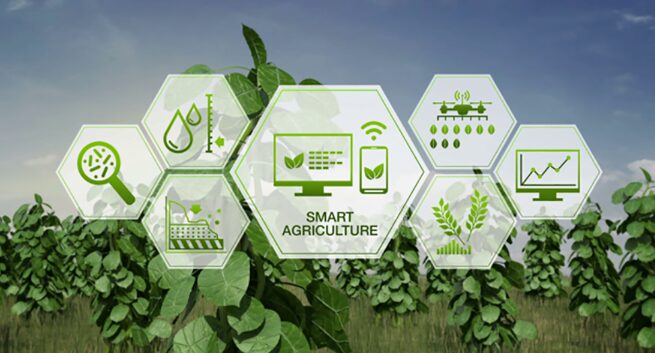
In the dynamic realm of agribusiness, investment decisions play a pivotal role in shaping the landscape of agricultural yield and acreage. The correlation between strategic investments and the prospects of crop acreage is a critical factor influencing the success of stakeholders in the agribusiness sector. This article delves into the intricate relationship between investment decisions and agricultural outcomes, providing insights for stakeholders seeking to navigate the complexities of the ever-evolving agribusiness environment.
1. Understanding the Agribusiness Ecosystem: A Holistic Approach to Investment
To unravel the correlation between investment decisions and agricultural yield and acreage, it is essential to understand the broader agribusiness ecosystem. This includes factors such as market dynamics, regulatory frameworks, technological advancements, and global trends that collectively influence the sector.
2. The Role of Investment in Agricultural Technology: Boosting Yield and Efficiency
Agribusiness stakeholders increasingly recognize the importance of technology in enhancing agricultural yield and optimizing acreage. Investments in precision farming, smart irrigation systems, and data analytics contribute to improved efficiency and sustainable practices.
3. Data-Driven Decision-Making: Leveraging Crop Acreage Data for Strategic Insights
In the digital age, data is a powerful asset. Investors in agribusiness are leveraging crop acreage data to make informed decisions. Access to accurate and timely information about crop distribution, regional trends, and historical yield patterns enables stakeholders to identify potential opportunities and risks.
4. Risk Mitigation Strategies: How Investment Decisions Impact Acreage Planning
The correlation between investment decisions and agricultural outcomes extends to risk management. Stakeholders employ various strategies, such as diversification, insurance, and hedging, to mitigate risks associated with factors like weather fluctuations, market volatility, and geopolitical events that could affect crop acreage.
5. Market Demand and Supply Dynamics: Aligning Investments with Acreage Planning
One of the critical factors influencing investment decisions is market demand. Stakeholders must align their investments with the current and projected demand for specific crops. This involves careful analysis of consumer preferences, emerging trends, and the overall supply-demand balance in the agricultural market.
6. Government Policies and Incentives: Impact on Investment Decisions and Acreage Allocation
Government policies and incentives significantly influence investment decisions in agribusiness. Stakeholders keenly assess policy frameworks related to subsidies, land use, and environmental regulations, as these directly impact acreage planning and, consequently, agricultural yield.
7. Investment in Sustainable Agriculture: Balancing Profitability and Environmental Responsibility
The growing emphasis on sustainable practices in agriculture is shaping investment decisions. Stakeholders are increasingly allocating funds to initiatives that promote environmental stewardship, soil health, and resource conservation, recognizing the long-term benefits to both yield and acreage.
8. Crop Diversification: A Strategic Investment for Acreage Optimization
Smart investment decisions often involve diversification strategies. Stakeholders explore opportunities to invest in a variety of crops, considering factors such as market demand, climate suitability, and regional growth prospects. Crop diversification contributes to optimizing acreage and mitigating risks associated with monoculture.
9. Financing Mechanisms for Farmers: Facilitating Acreage Expansion and Yield Improvement
Investment decisions in agribusiness extend beyond direct funding to farmers. Stakeholders explore innovative financing mechanisms that empower farmers to expand their acreage, invest in modern farming practices, and ultimately enhance crop yields.
10. Technological Adoption at Farm Level: The Ripple Effect on Acreage Productivity
Investments in agricultural technology not only influence yield but also have a direct impact on acreage productivity. The adoption of advanced machinery, automated systems, and precision farming tools contributes to efficient land use and increased productivity per acre.
11. Start-ups and AgTech Innovations: Disruptive Investments Transforming Acreage Management
The agribusiness sector is witnessing a surge in start-ups and AgTech innovations. Investors keen on gaining a competitive edge are allocating funds to these disruptors, which often bring novel solutions for optimizing crop acreage, improving yield, and revolutionizing traditional farming practices.
12. Global Trade Dynamics: Affecting Crop Acreage Planning and Investment Decisions
International trade plays a crucial role in agribusiness. Stakeholders closely monitor global trade dynamics, tariff policies, and geopolitical events that can influence crop prices, demand, and subsequently impact investment decisions and acreage planning.
13. Supply Chain Resilience: Investments for Acreage Stability in Uncertain Times
The COVID-19 pandemic highlighted the importance of resilient supply chains. Stakeholders are investing in technologies and strategies that enhance the resilience of the agricultural supply chain, ensuring stability in acreage planning and minimizing disruptions that could affect yield.
Conclusion:
In the complex web of agribusiness, the correlation between investment decisions and agricultural yield and acreage outlook is intricate and multifaceted. Stakeholders who navigate this relationship with a keen understanding of market dynamics, technological advancements, and sustainability imperatives are well-positioned to drive success. As agribusiness continues to evolve, informed investment decisions will play a pivotal role in shaping the future of agricultural yield and acreage optimization.